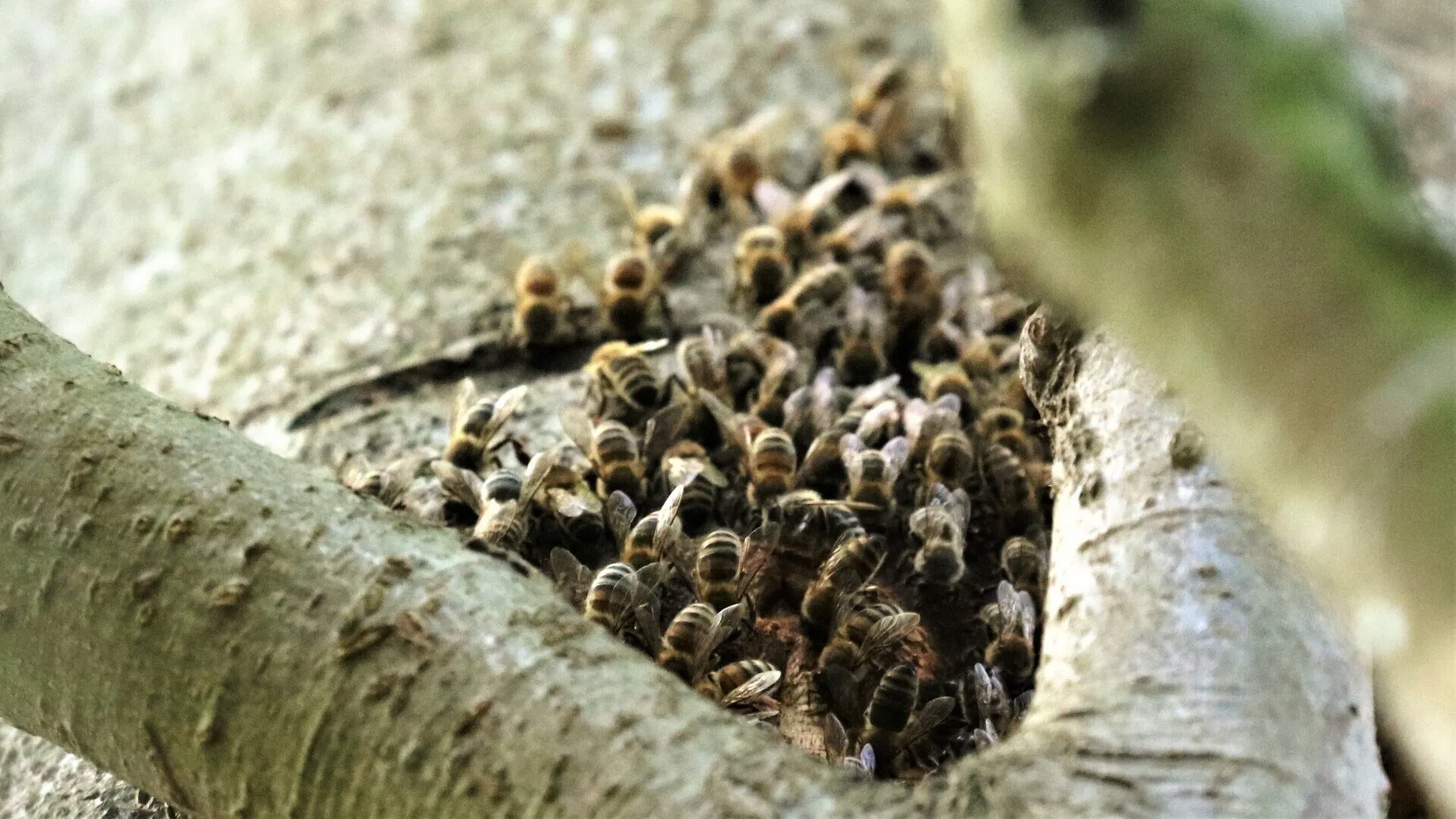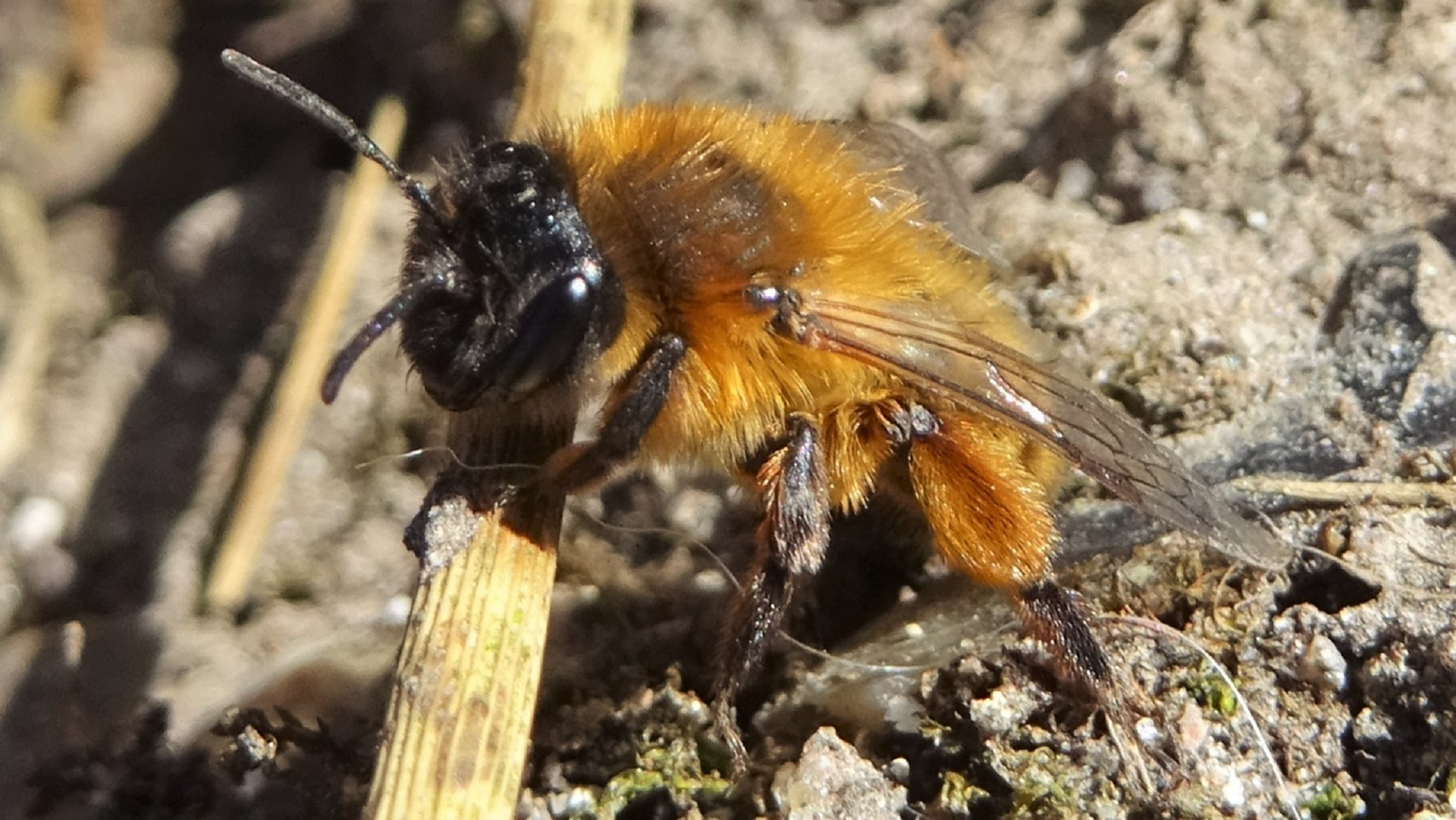Hymenoptera are a large insect order that includes the bees, wasps, ants and sawflies.
Honey Bee
Apis mellifera
Honey Bees live in large colonies. Far more now nest in man-made hives than live in a natural habitat. Many plants rely on these social creatures for pollination. Sterile females are known as 'workers' and their job is to look after the hive. They clean, guard, gather food and feed the larvae. Males are known as 'drones', their main role is to mate with the Queen. A Queen makes her first flight when she hears a group of drones approaching. Mating occurs in mid-air and the drone immediately dies afterwards. The Queen secretes a substance from her body that the workers lick. The workers then set about building the colony. The bees collect pollen and nectar when flowers start appearing. It takes twelve Honey bees their whole life to make one teaspoon of honey. Whether the honey is clear, opaque, soft or runny, depends on the flowers that they have been visiting. Bees belong to the order Hymenoptera which also contains ants, wasps and sawflies. Some such as Honey Bees and Bumblebees are social creatures living in colonies, but more than 90% of other Bees are solitary.

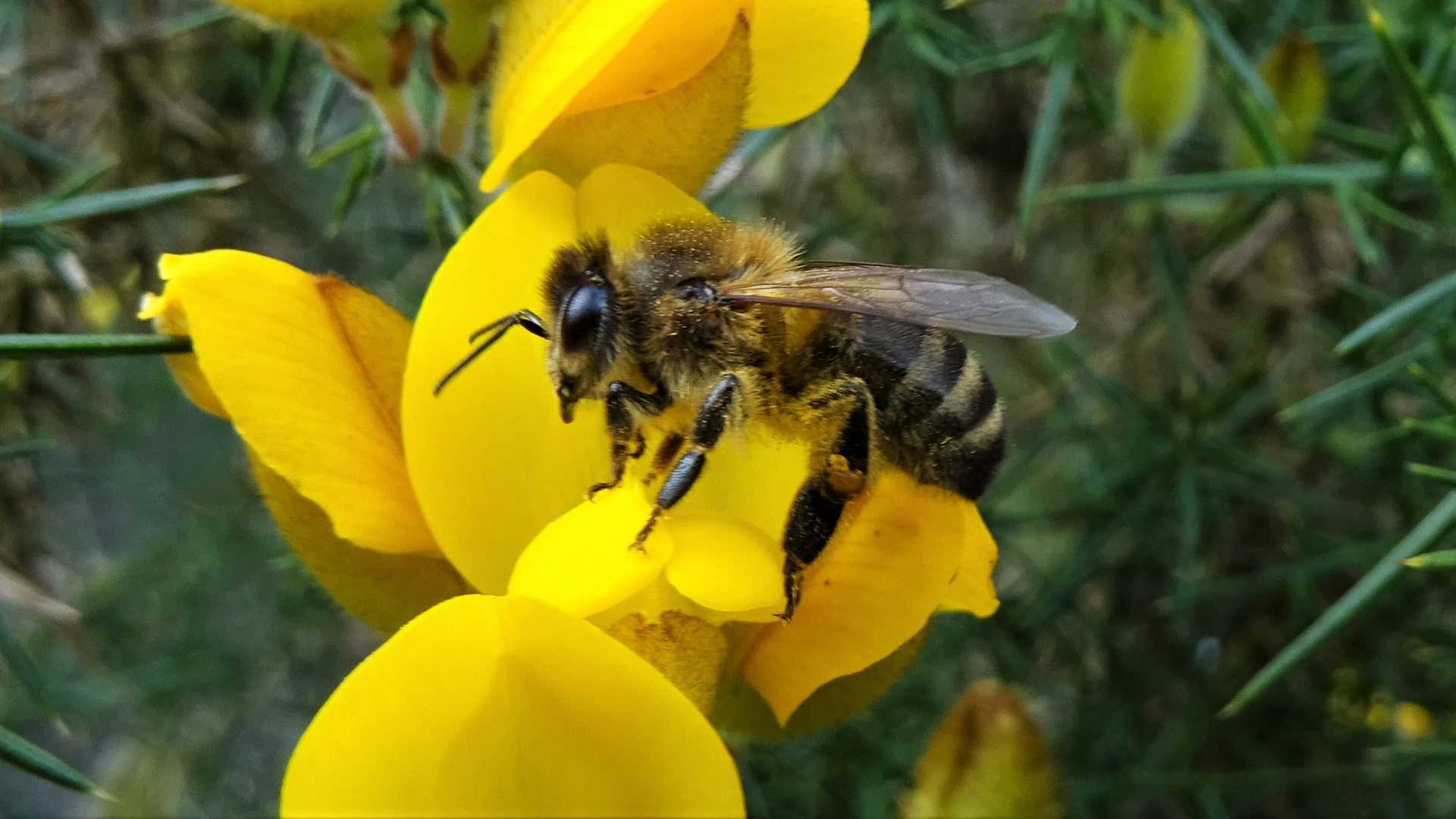
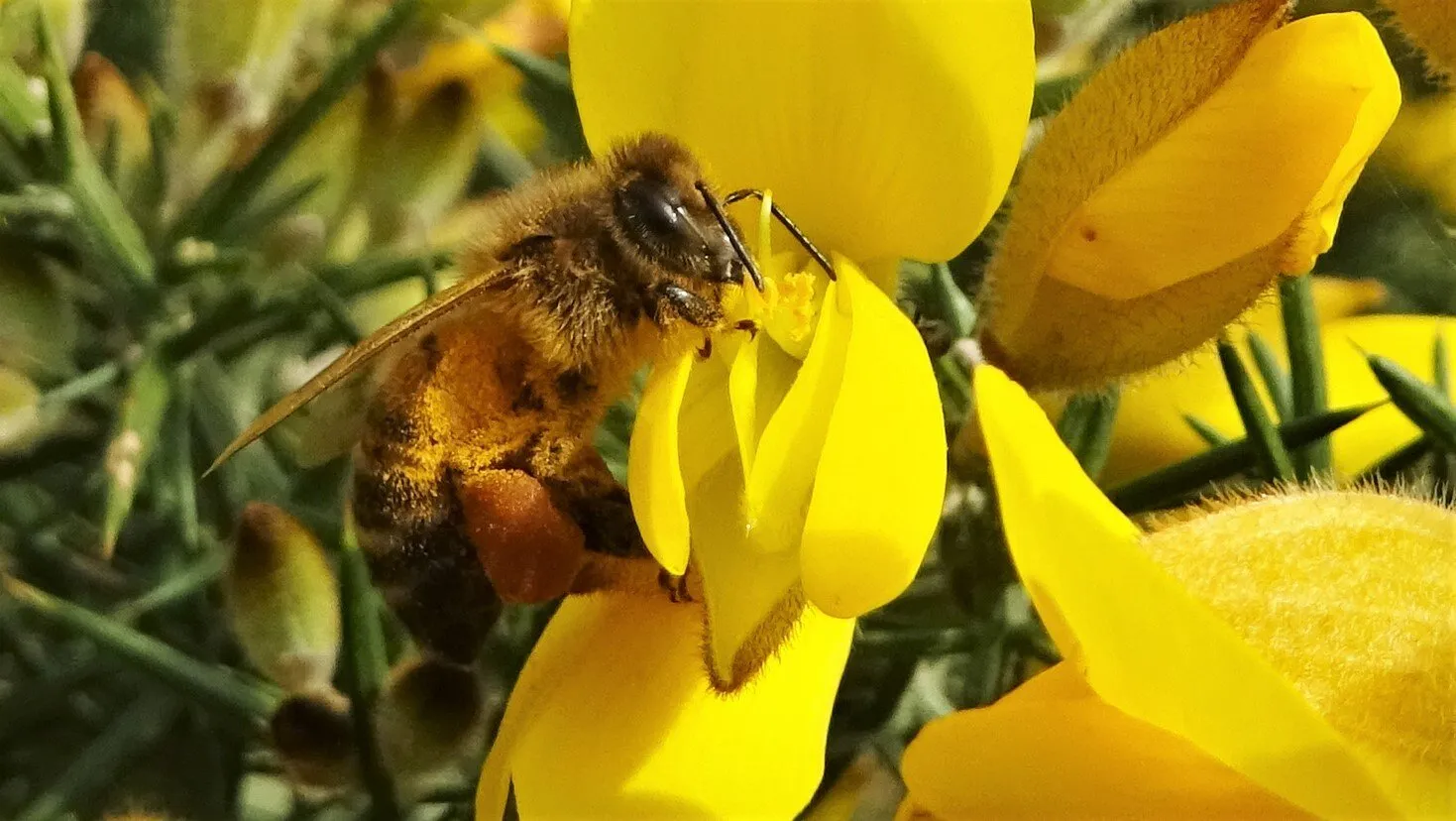
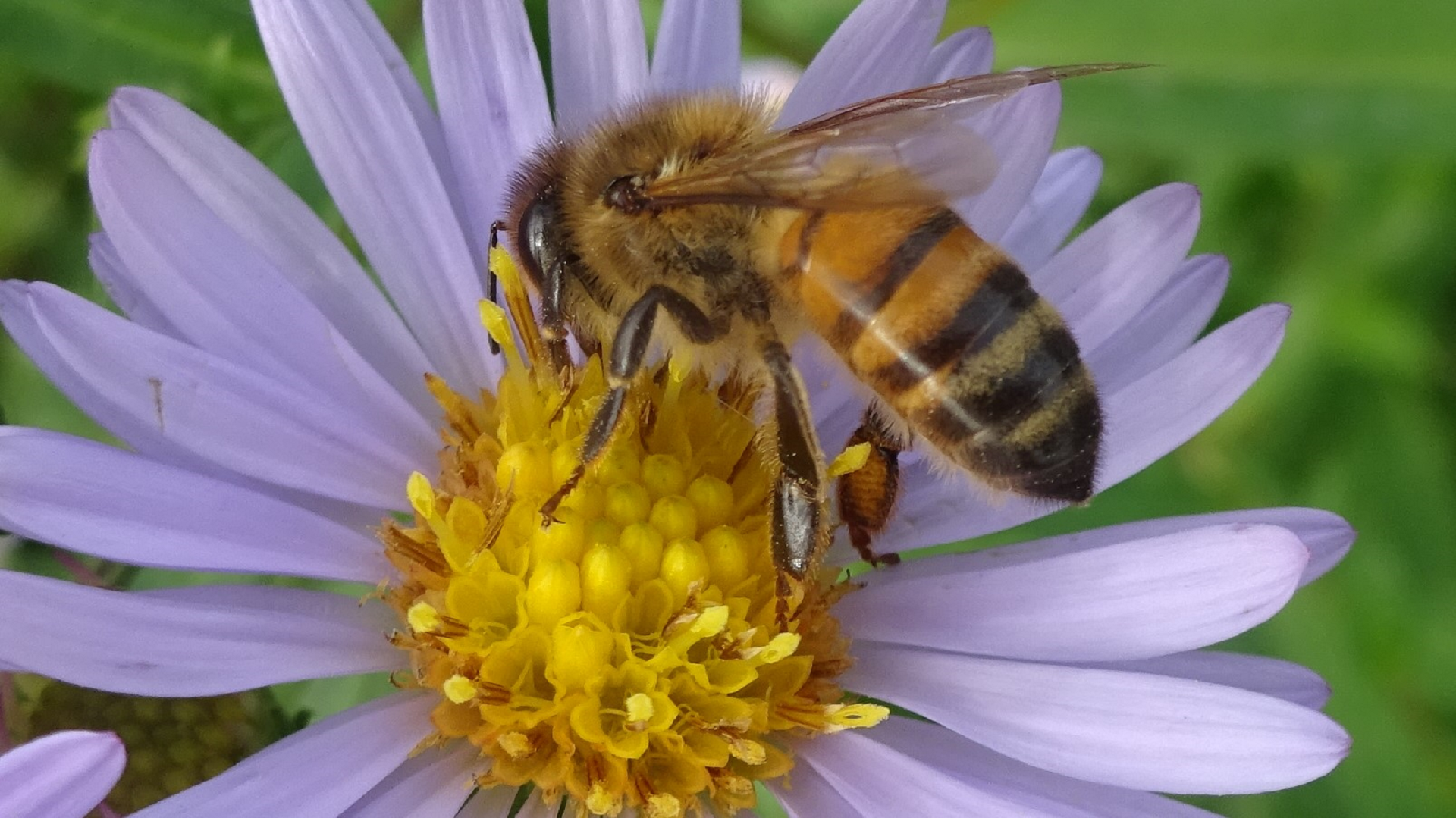
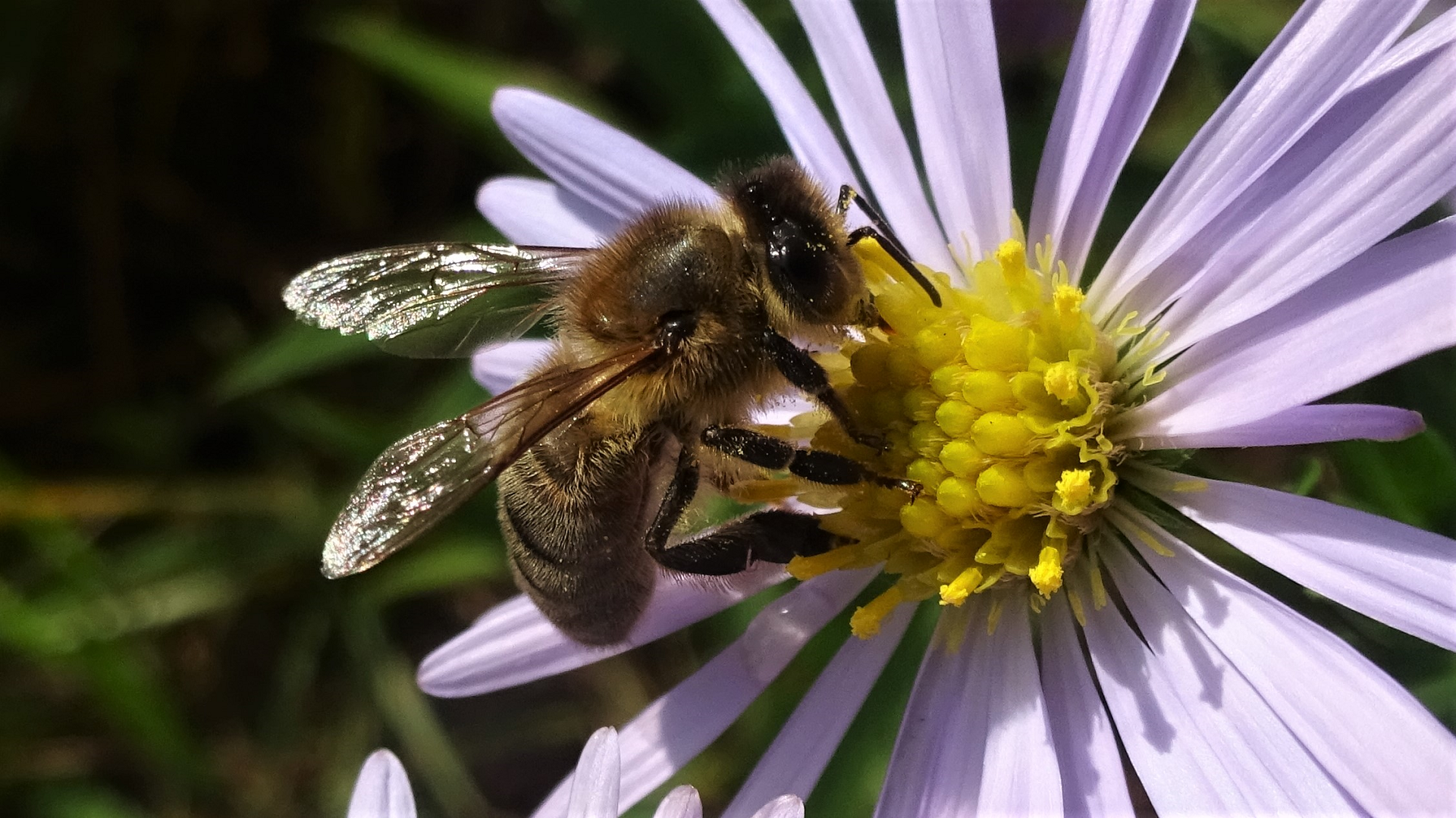
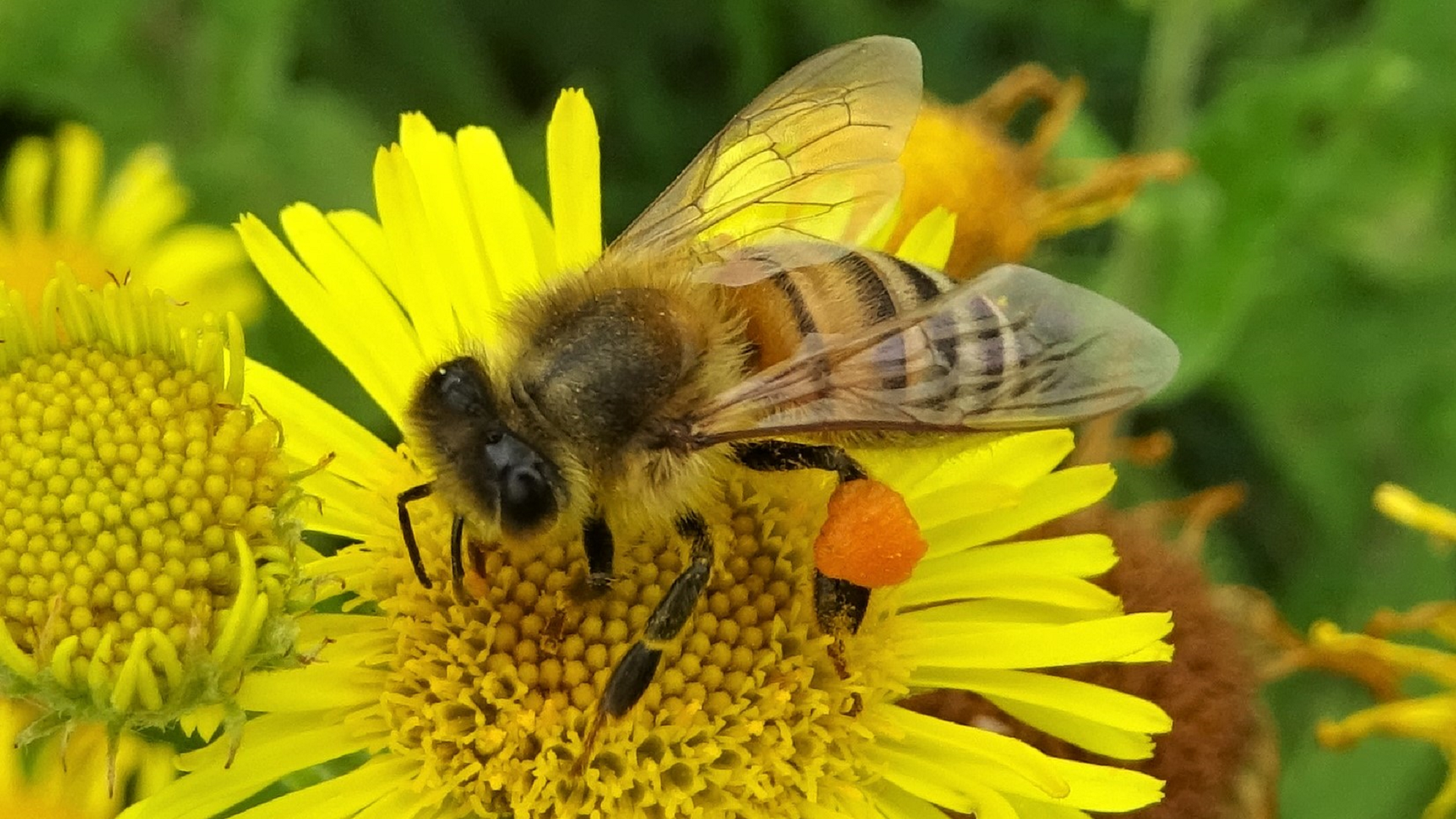
#
Wood-carving Leafcutter Bee
Megachile ligniseca
A large summer-flying solitary bee that nests mainly in deadwood often utilising holes in fence posts. Their nests are built with pieces of leaf that they cut away from plants. Leaves are carried into the nest to build cells in which their larvae live. This particular bee was building a home in a crack on a picnic table.
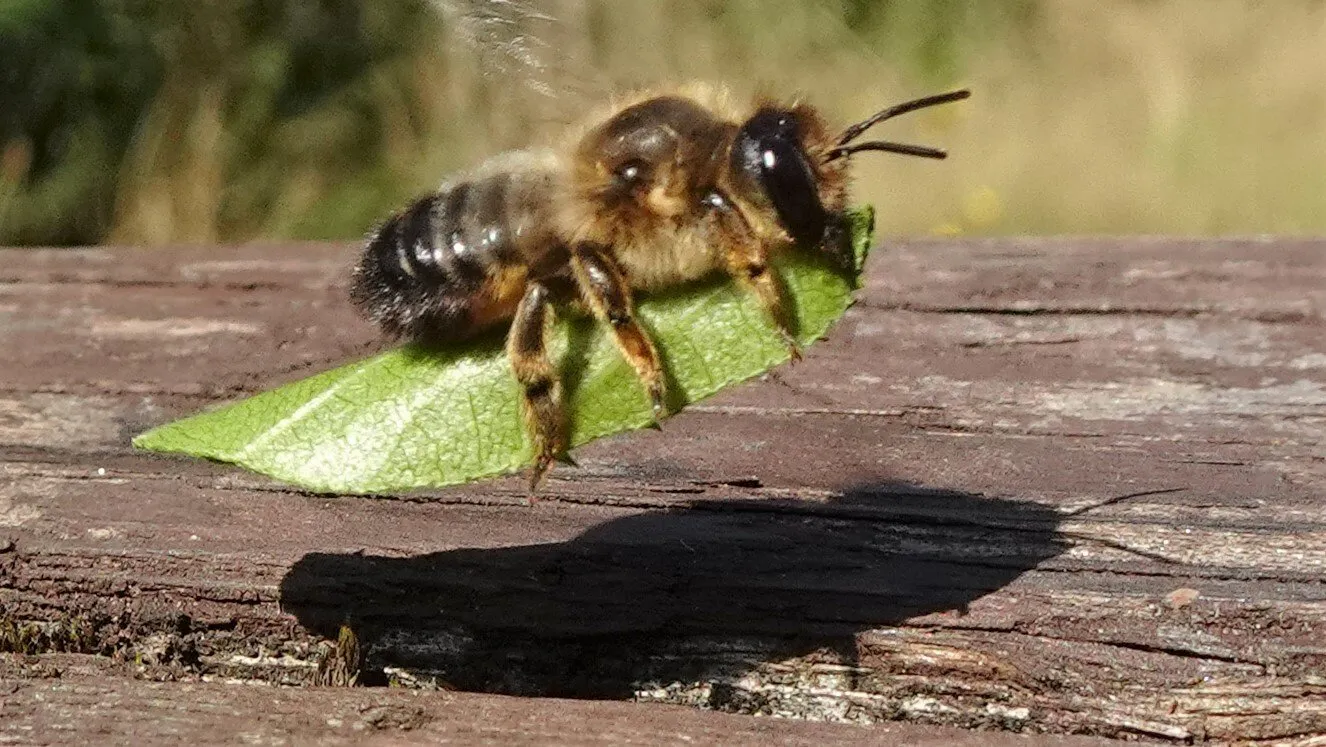
#
Yellow-legged Mining Bee
Andrena flavipes
This species builds its nests in the ground. There are two generations in the year, the first flies from May to May and the second from June until August. Males look different to females, being slimmer, less hairy and lacking the thick covering of orange-yellow hairs on the hind leg.
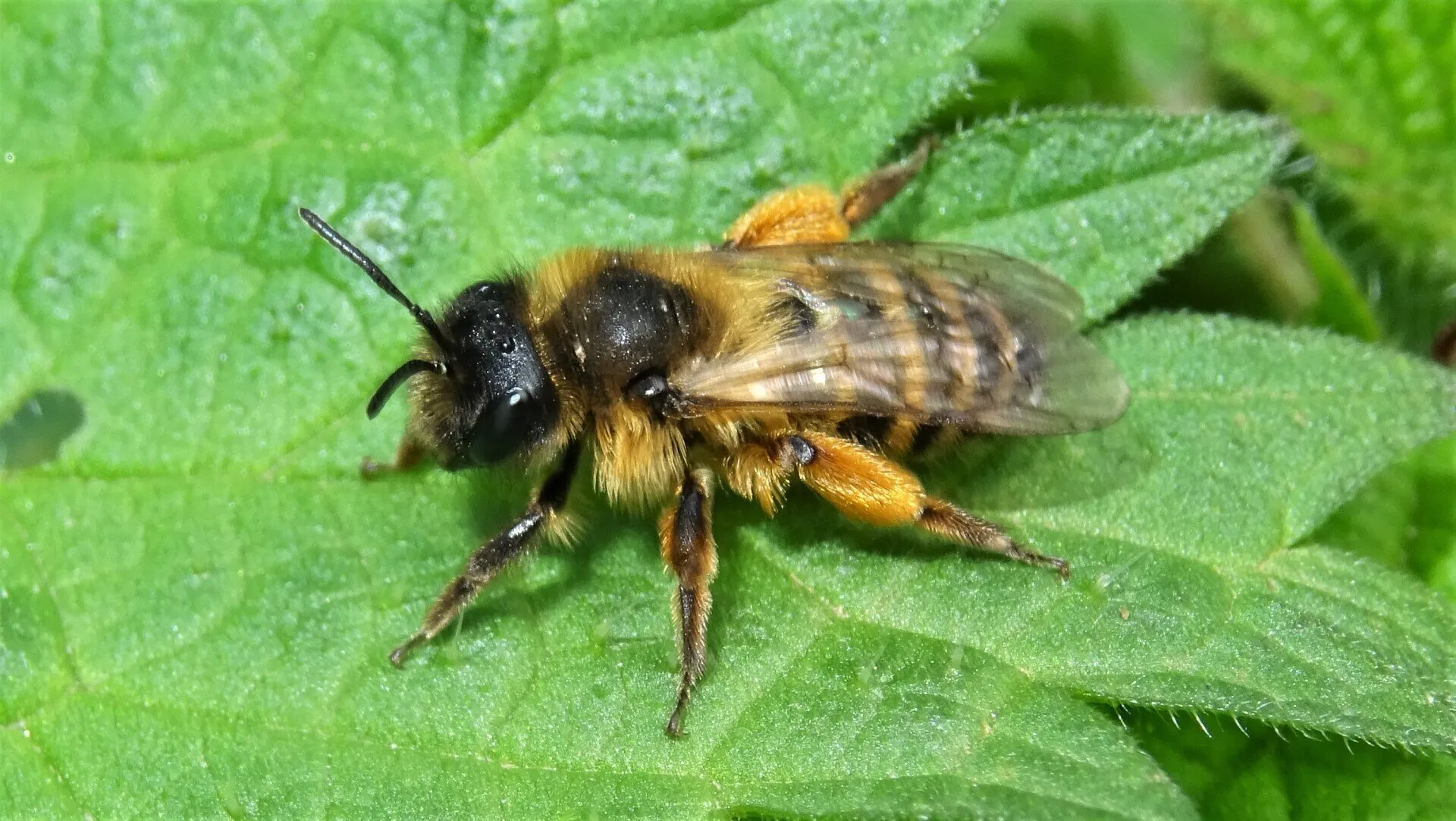
Forest Cuckoo Bumblebee
Bombus sylvestris
Does not build a nest but takes over those of other bumblebees instead. Females start looking for a host from April and are often found resting on flowers in the sunshine. The face is as wide as it is long and the wings are dark. Flowers are visited for nectar and pollen but this bee doesn't collect anything for its young.
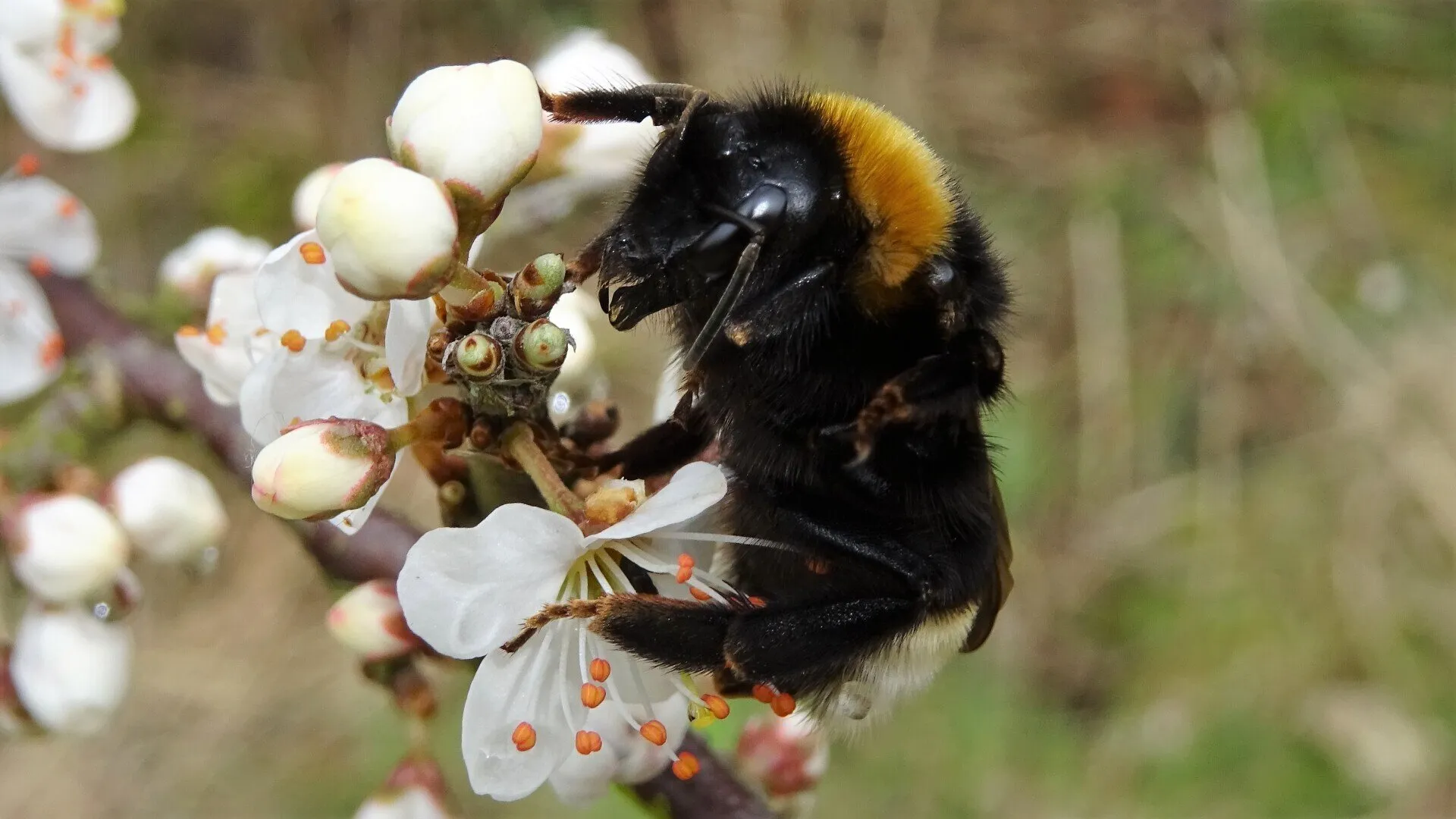
#
Tree Bumblebee
Bombus hypnorum
Short-tongued species sometimes found visiting bramble flowers. Queens, workers and males are similar in appearance, except Queens are larger. February is the month when Queens start emerging from hibernation to establish nests, then after about six weeks workers appear. Nests contain up to 150 workers. Males are produced towards the end of the nesting period two to three months later. Large groups of males fly near nest entrances waiting for new Queens they can mate with.

#
© hainaultforest.net. All rights reserved.


